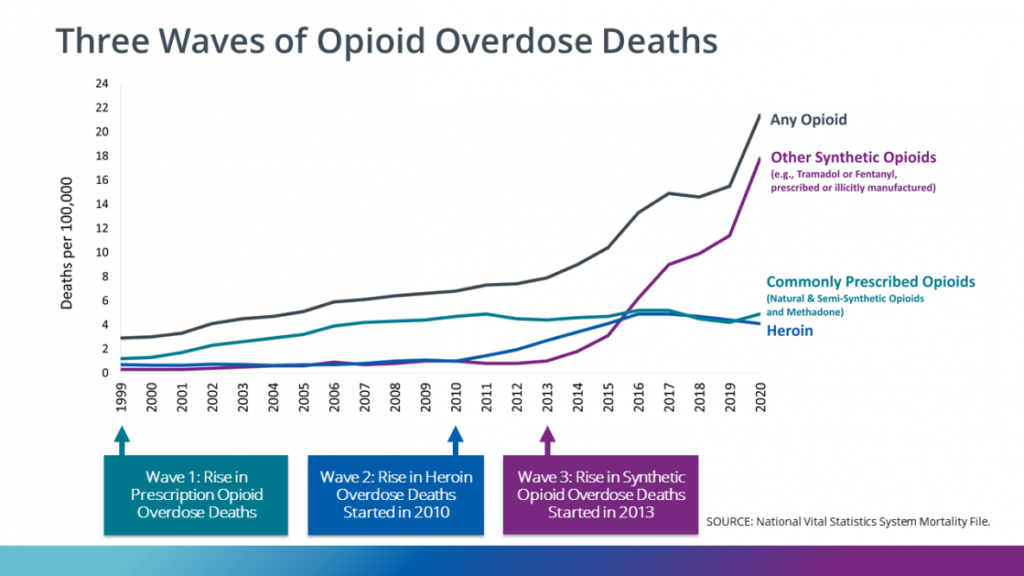Opioid Treatment
Even in the face of a pandemic, 2.4 million cases of chlamydia, gonorrhea, and syphilis were reported.
Understanding the Opioid Overdose Epidemic
The number of drug overdose deaths increased by nearly 30% from 2019 to 2020 and has quintupled since 1999. Nearly 75% of the 91,799 drug overdose deaths in 2020 involved an opioid. From 2019 to 2020, there were significant changes in opioid-involved death rates:
- Opioid-involved death rates increased by 38%.
- Prescription opioid-involved death rates increased by 17%.
- Heroin-involved death rates decreased by 7%.
- Synthetic opioid-involved death rates (excluding methadone) increased by 56%1.

From 1999–2020, more than 564,000 people died from an overdose involving any opioid, including prescription and illicit opioids1.
This rise in opioid overdose deaths can be outlined in three distinct waves.
- The first wave began with increased prescribing of opioids in the 1990s, with overdose deaths involving prescription opioids (natural and semi-synthetic opioids and methadone) increasing since at least 19993.
- The second wave began in 2010, with rapid increases in overdose deaths involving heroin4.
- The third wave began in 2013, with significant increases in overdose deaths involving synthetic opioids, particularly those involving illicitly manufactured fentanyl5,6,7. The market for illicitly manufactured fentanyl continues to change, and it can be found in combination with heroin, counterfeit pills, and cocaine.8
Many opioid-involved overdose deaths also include other drugs9.10.
